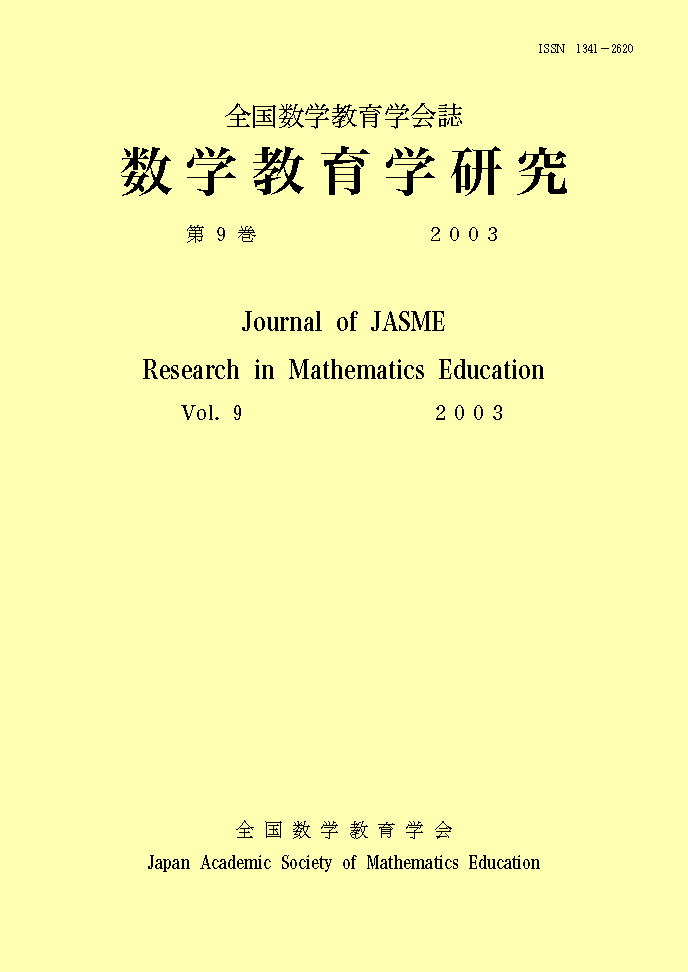9 巻
選択された号の論文の22件中1~22を表示しています
- |<
- <
- 1
- >
- >|
-
原稿種別: 本文
2003 年 9 巻 p. 1-13
発行日: 2003年
公開日: 2019/01/17
PDF形式でダウンロード (1615K) -
原稿種別: 本文
2003 年 9 巻 p. 15-23
発行日: 2003年
公開日: 2019/01/17
PDF形式でダウンロード (1221K) -
原稿種別: 本文
2003 年 9 巻 p. 25-35
発行日: 2003年
公開日: 2019/01/17
PDF形式でダウンロード (1261K) -
原稿種別: 本文
2003 年 9 巻 p. 37-45
発行日: 2003年
公開日: 2019/01/17
PDF形式でダウンロード (1078K) -
原稿種別: 本文
2003 年 9 巻 p. 47-64
発行日: 2003年
公開日: 2019/01/17
PDF形式でダウンロード (2149K) -
原稿種別: 本文
2003 年 9 巻 p. 65-70
発行日: 2003年
公開日: 2019/01/17
PDF形式でダウンロード (701K) -
原稿種別: 本文
2003 年 9 巻 p. 71-80
発行日: 2003年
公開日: 2019/01/17
PDF形式でダウンロード (1159K) -
原稿種別: 本文
2003 年 9 巻 p. 81-96
発行日: 2003年
公開日: 2019/01/17
PDF形式でダウンロード (1702K) -
原稿種別: 本文
2003 年 9 巻 p. 97-108
発行日: 2003年
公開日: 2019/01/17
PDF形式でダウンロード (1370K) -
原稿種別: 本文
2003 年 9 巻 p. 109-116
発行日: 2003年
公開日: 2019/01/17
PDF形式でダウンロード (882K) -
原稿種別: 本文
2003 年 9 巻 p. 117-126
発行日: 2003年
公開日: 2019/01/17
PDF形式でダウンロード (979K) -
原稿種別: 本文
2003 年 9 巻 p. 127-140
発行日: 2003年
公開日: 2019/01/17
PDF形式でダウンロード (1562K) -
原稿種別: 本文
2003 年 9 巻 p. 141-152
発行日: 2003年
公開日: 2019/01/17
PDF形式でダウンロード (1552K) -
原稿種別: 本文
2003 年 9 巻 p. 153-162
発行日: 2003年
公開日: 2019/01/17
PDF形式でダウンロード (1316K) -
原稿種別: 本文
2003 年 9 巻 p. 163-179
発行日: 2003年
公開日: 2019/01/17
PDF形式でダウンロード (1724K) -
原稿種別: 本文
2003 年 9 巻 p. 181-191
発行日: 2003年
公開日: 2019/01/17
PDF形式でダウンロード (1089K) -
原稿種別: 本文
2003 年 9 巻 p. 193-202
発行日: 2003年
公開日: 2019/01/17
PDF形式でダウンロード (1012K) -
原稿種別: 本文
2003 年 9 巻 p. 203-212
発行日: 2003年
公開日: 2019/01/17
PDF形式でダウンロード (758K) -
原稿種別: 本文
2003 年 9 巻 p. 213-221
発行日: 2003年
公開日: 2019/01/17
PDF形式でダウンロード (1151K) -
原稿種別: 本文
2003 年 9 巻 p. 223-234
発行日: 2003年
公開日: 2019/01/17
PDF形式でダウンロード (1358K) -
原稿種別: 本文
2003 年 9 巻 p. 235-241
発行日: 2003年
公開日: 2019/01/17
PDF形式でダウンロード (815K) -
原稿種別: 本文
2003 年 9 巻 p. 243-253
発行日: 2003年
公開日: 2019/01/17
PDF形式でダウンロード (1252K)
- |<
- <
- 1
- >
- >|
